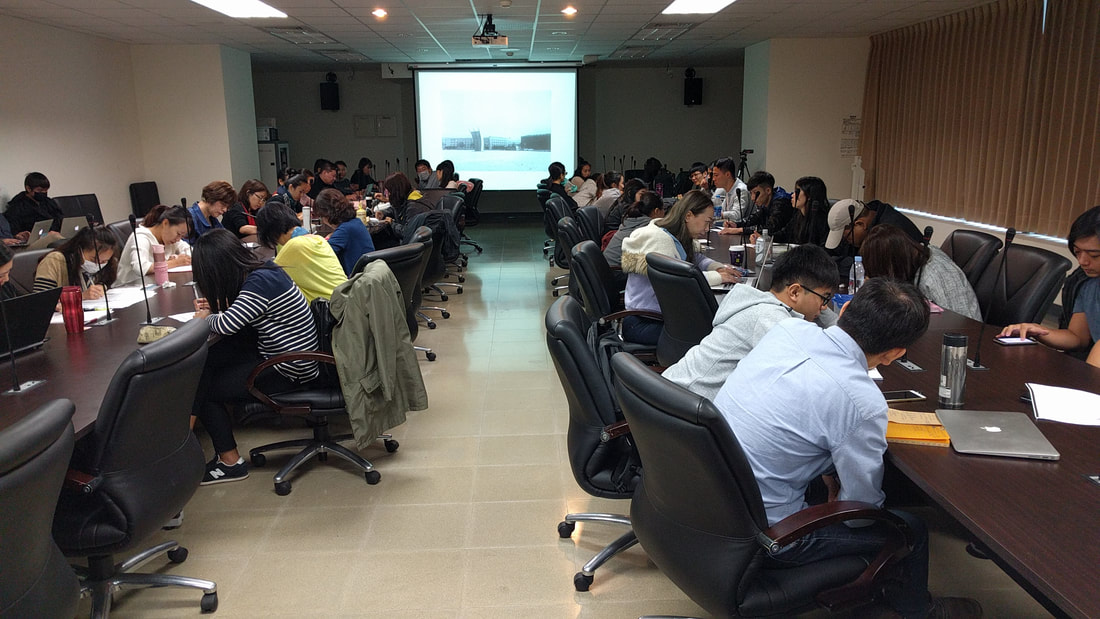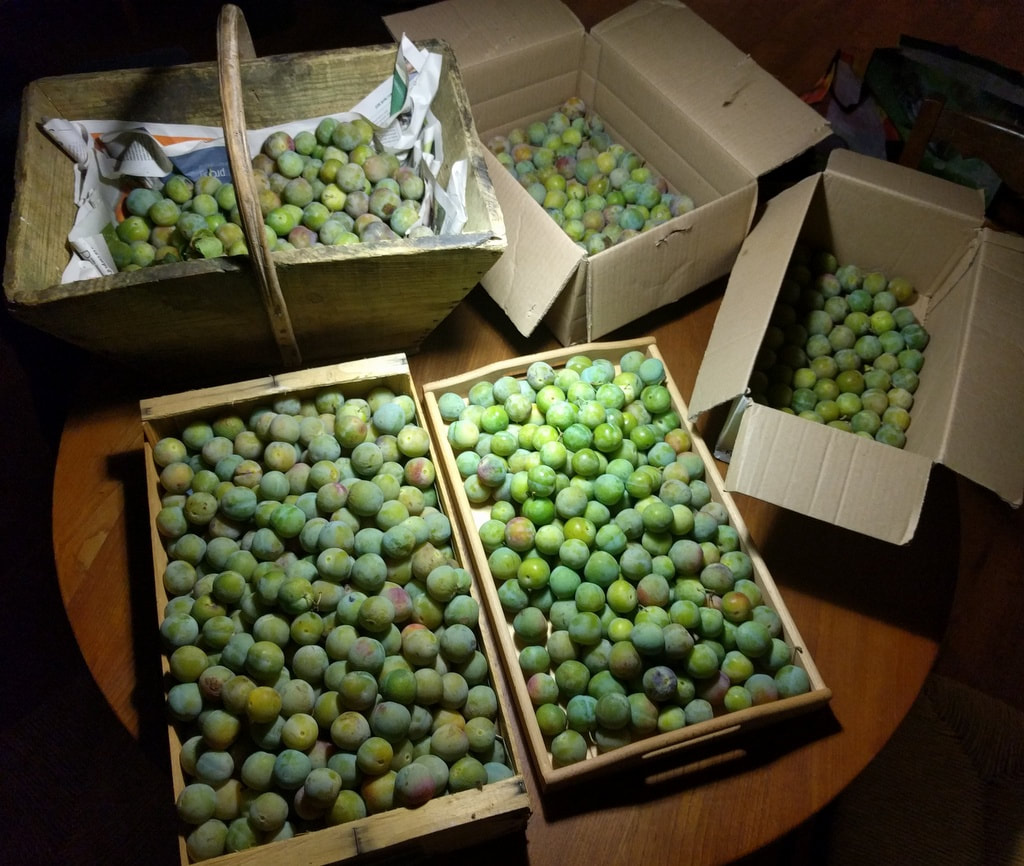Reading time 2-3 minutes
In October, I was lucky enough to go to Taiwan, a place I had never visited before, for a trip that was part work, part fun. My highlights: conversations in teahouses, a walk in the hills outside Taipei (see above), bathing in hot pools, and being part of a performance in a modern museum in the city of Taichung.
On one particular day, I also ran a seminar at the University of Tapei on the subject of “Writing Experience” (deliberately ambiguous, since it could mean either “the experience of writing” or “writing about experience”, or both).
The people I was speaking to were interested in bringing their own experience into their writing. At one point, I invited them to spend five minutes writing freely about some themes I had been talking about (see photo below).
In October, I was lucky enough to go to Taiwan, a place I had never visited before, for a trip that was part work, part fun. My highlights: conversations in teahouses, a walk in the hills outside Taipei (see above), bathing in hot pools, and being part of a performance in a modern museum in the city of Taichung.
On one particular day, I also ran a seminar at the University of Tapei on the subject of “Writing Experience” (deliberately ambiguous, since it could mean either “the experience of writing” or “writing about experience”, or both).
The people I was speaking to were interested in bringing their own experience into their writing. At one point, I invited them to spend five minutes writing freely about some themes I had been talking about (see photo below).
After the spell of freewriting, somebody offered to wander around the room collecting questions for me to respond to, one of which went like this: “I am interested in your life story; could you describe some turning points?” – a gift of a question! Thinking on my feet, I found myself recalling and sharing the following experience, which happened in my mid-40s:
While doing some work for an executive coaching firm in London, I encountered someone who behaved quite differently from all the other business consultants I had known up until then. I had heard that she was well-versed in something called ‘complexity theory'. Though I didn't yet know what this meant, I could see that it was capturing people’s imagination at the time.
The person's name was Patricia Shaw. and what really struck me was her way of working with people. To give a flavour, one afternoon she gathered everybody together for a conversation about ‘what we thought we were doing together’. She invited every member of the coaching firm – not just the coaches/consultants, but also freelancers like me, and the administrative assistants – and she called the conversation a ‘collaborative inquiry’. There was no written agenda, no formal presentation, no chairperson and, as far as I remember, nobody was taking minutes. In effect, it was an opportunity for each one of us to share our experience or our thinking, in whatever form we wanted.
As you can imagine, the contributions were diverse. Some were unexpected – I distinctly remember being taken aback when the person in charge of marketing chose to play a video by new-age guru Deepak Chopra. Not the usual material for a business meeting!
The person's name was Patricia Shaw. and what really struck me was her way of working with people. To give a flavour, one afternoon she gathered everybody together for a conversation about ‘what we thought we were doing together’. She invited every member of the coaching firm – not just the coaches/consultants, but also freelancers like me, and the administrative assistants – and she called the conversation a ‘collaborative inquiry’. There was no written agenda, no formal presentation, no chairperson and, as far as I remember, nobody was taking minutes. In effect, it was an opportunity for each one of us to share our experience or our thinking, in whatever form we wanted.
As you can imagine, the contributions were diverse. Some were unexpected – I distinctly remember being taken aback when the person in charge of marketing chose to play a video by new-age guru Deepak Chopra. Not the usual material for a business meeting!
This memorable experience does seem like a turning point in retrospect. It gave me a glimpse of a different kind of work meeting – one without a planned, regimented written agenda. Also striking was the use of an apparently simple question like “What do we think we are doing together?”. I have since noticed repeatedly how useful this question can be in stimulating collective reflection and helping people get to know each other and work together.
But can such free-form conversations generate decisions or 'next steps'?, you might be wondering. Maybe not a list of 'action points' as such, but such gatherings can, in my experience, leave participants with a clear will and desire to do something differently.
I don’t know what my Taiwanese listeners made of my turning point story. But for me, the question reminded me of when and how I began to think that ‘simply talking’, though not easy, is a legitimate and valuable thing for work colleagues to do.
But can such free-form conversations generate decisions or 'next steps'?, you might be wondering. Maybe not a list of 'action points' as such, but such gatherings can, in my experience, leave participants with a clear will and desire to do something differently.
I don’t know what my Taiwanese listeners made of my turning point story. But for me, the question reminded me of when and how I began to think that ‘simply talking’, though not easy, is a legitimate and valuable thing for work colleagues to do.



 RSS Feed
RSS Feed